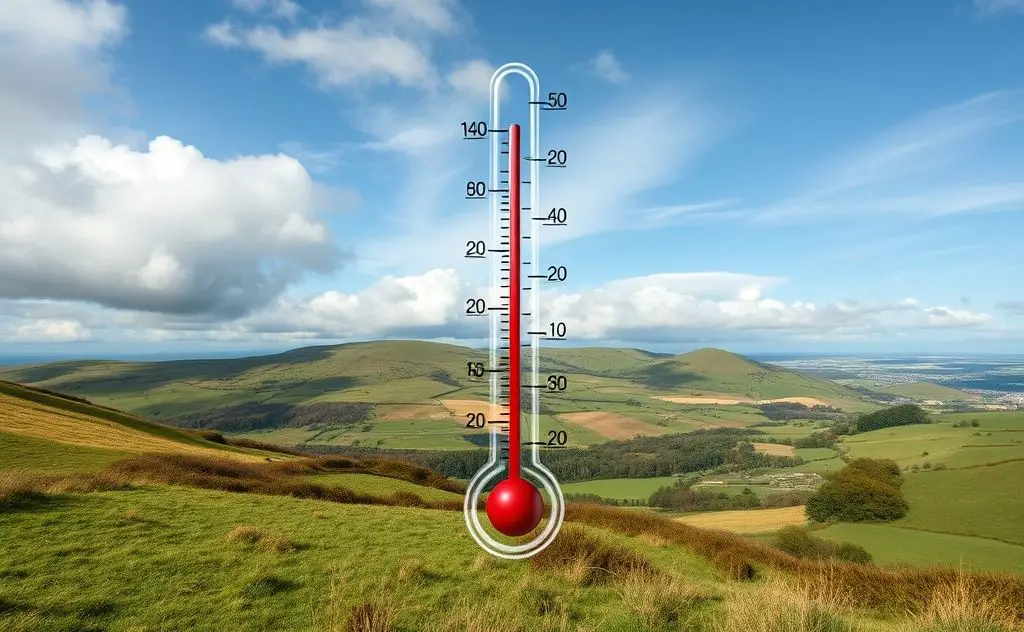The UK primarily uses degrees Celsius (°C) for temperature measurement, aligning with the metric system adopted in most of Europe.
The United Kingdom uses Celsius (°C) as its standard temperature measurement system for weather forecasts, scientific applications, and daily life. While Fahrenheit was historically used, the UK officially switched to Celsius in the mid-20th century as part of the metrication process.

When Did the UK Switch to Celsius?
The UK began transitioning from Fahrenheit to Celsius in the 1960s, with full adoption completed by the 1970s. This change aligned the UK with most other countries worldwide and simplified international scientific communication. The Met Office, the UK’s national weather service, now exclusively uses Celsius for all temperature reporting.
Why the UK Changed Measurement Systems
Several factors influenced the UK’s decision to adopt Celsius:
- Scientific standardization with European neighbors
- Simplification of international trade and communication
- Alignment with the International System of Units (SI)
- Easier conversion between temperature and energy measurements

How Temperature is Measured in the UK
The Met Office uses precise instruments and standardized methods to ensure accurate temperature measurements:
Official Temperature Measurement Devices
For official records, the UK uses platinum resistance thermometers (PRTs) housed in Stevenson screens. These specialized instruments provide the most reliable air temperature measurements by:
- Measuring electrical resistance changes in platinum wire
- Being placed 1.25 meters above ground level
- Located over natural surfaces like grass
- Painted white to reflect solar radiation
- Ventilated to allow air circulation
Why Stevenson Screens Matter
These weather boxes prevent false readings from direct sunlight or ground heat. They maintain consistency across all UK weather stations, allowing for accurate historical comparisons. For example, the UK’s record high of 40.3°C in July 2022 was measured using this standardized method.
Everyday Temperature Measurement in the UK
Beyond official weather reporting, Celsius appears throughout British daily life:
| Application | Measurement |
|---|---|
| Home thermostats | °C |
| Oven temperatures | °C (with some older ovens showing °F) |
| Medical thermometers | °C |
| Car temperature displays | °C (configurable in some vehicles) |
Exceptions Where Fahrenheit Persists
Some older Britons still reference Fahrenheit for weather temperatures, particularly for high summer temperatures. Certain specialized fields like infrared heating technology may use Kelvin for scientific measurements.
Comparing UK Temperature Measurement to Other Countries
The UK’s use of Celsius aligns with:
- All European Union countries
- Canada (though some older Canadians use Fahrenheit)
- Australia and New Zealand
- Most Asian and African nations
The United States remains the most notable exception, still primarily using Fahrenheit for weather forecasts and daily temperature references. Some Caribbean nations also maintain Fahrenheit usage due to US influence.
Temperature Conversion Between Systems
When converting between Celsius and Fahrenheit:
- °F = (°C × 9/5) + 32
- °C = (°F – 32) × 5/9
For quick reference, these benchmarks help understand UK temperature reports:
| °C | °F | Description |
|---|---|---|
| -10 | 14 | Very cold winter day |
| 0 | 32 | Freezing point of water |
| 10 | 50 | Cool autumn day |
| 20 | 68 | Room temperature |
| 30 | 86 | Hot summer day |
| 40 | 104 | Extreme heat |
Impact on Heating Systems in the UK
The use of Celsius affects how Britons set and understand their heating systems. Most UK thermostats display temperatures in Celsius, with recommended home temperatures being:
- Living rooms: 18-21°C
- Bedrooms: 16-18°C
- Bathrooms: 22°C
Understanding these Celsius measurements helps when choosing between oil-filled radiators vs electric heaters or setting up more efficient heating systems.
Temperature Measurement in Smart Devices
Modern smart home devices in the UK, like the Samsung Galaxy Watch’s infrared temperature sensor mentioned in their support documentation, default to Celsius measurements. These devices can track subtle temperature changes as small as 0.1°C, useful for both health monitoring and home climate control.
Why Accurate Temperature Measurement Matters
Precise temperature recording affects many aspects of UK life:
- Weather warnings for extreme heat or cold
- Energy efficiency calculations for homes
- Scientific research and climate studies
- Industrial processes and manufacturing
- Food safety standards
The UK’s commitment to standardized Celsius measurement ensures consistency across these critical areas. For those interested in alternative heating methods, understanding temperature scales is essential when comparing blue flame vs radiant propane heaters or other heating technologies.

